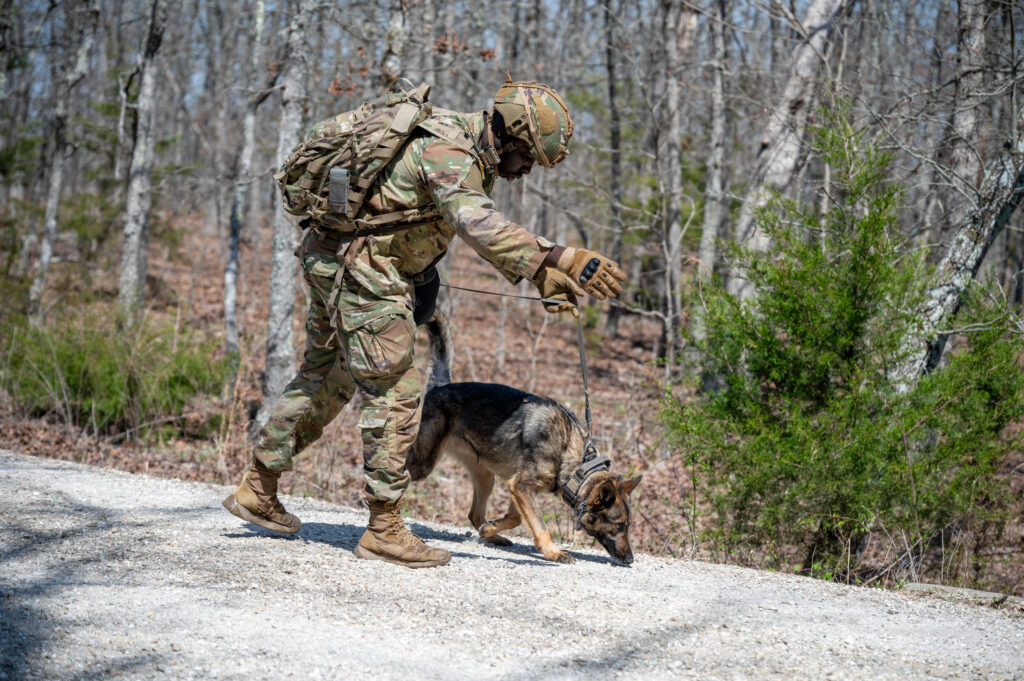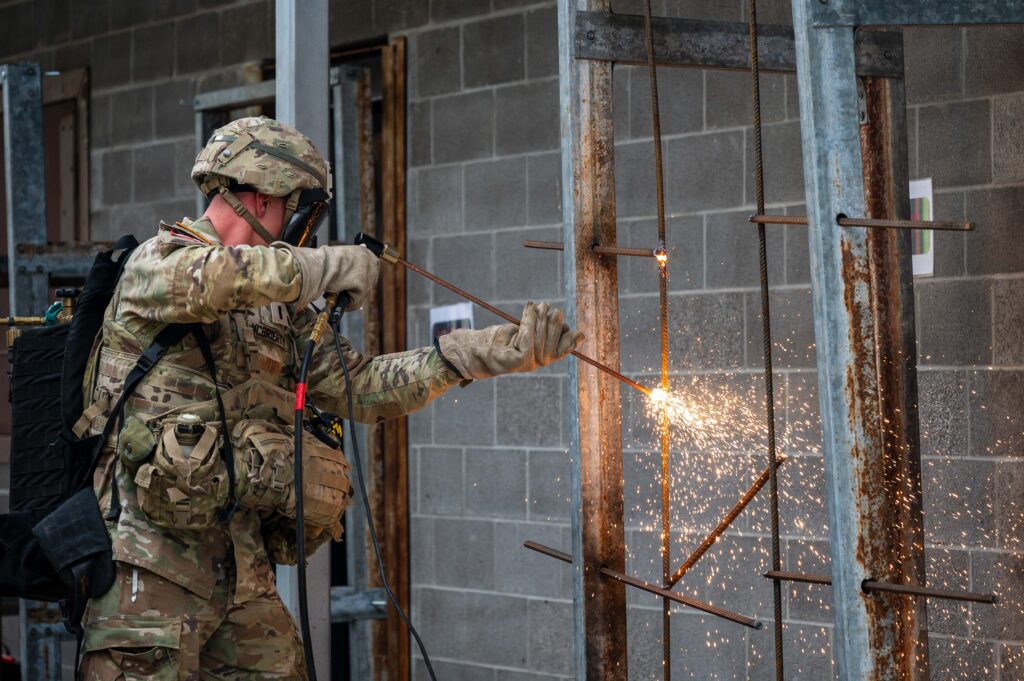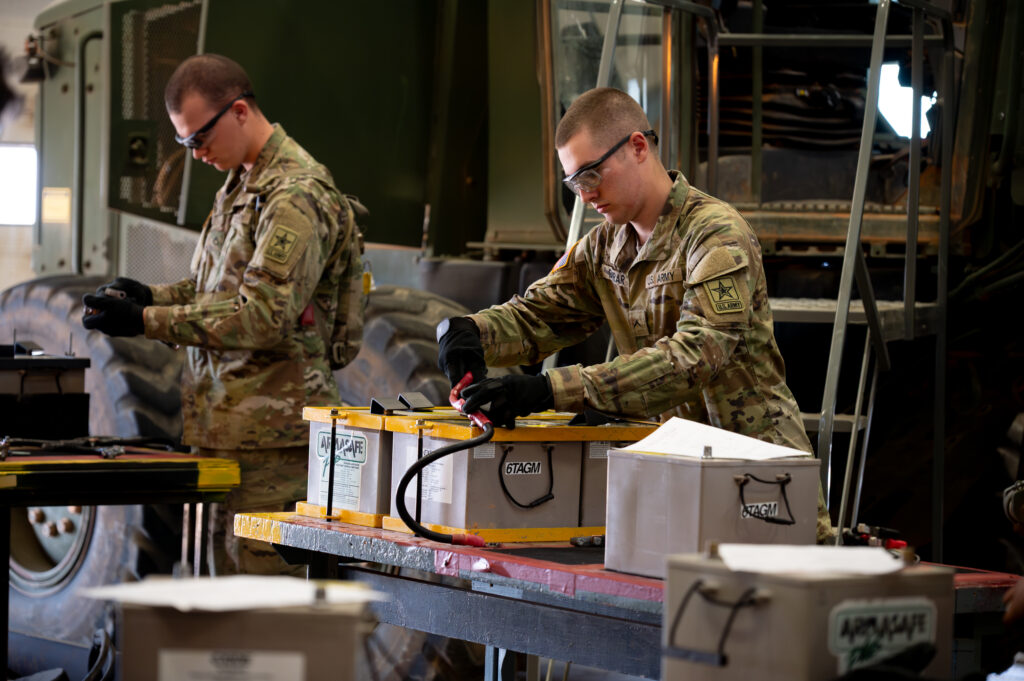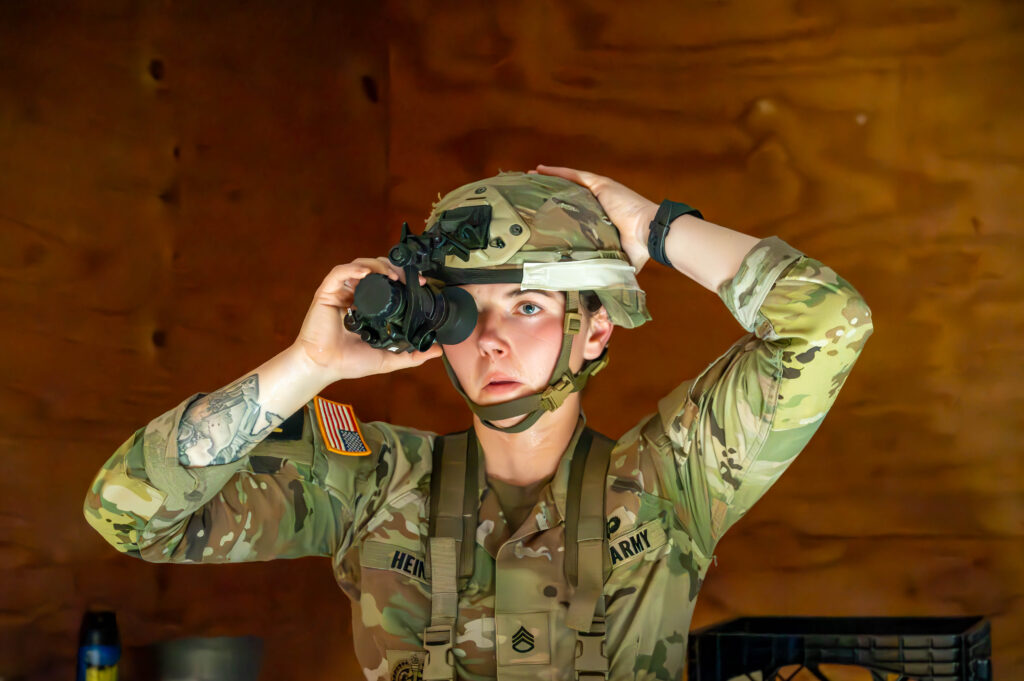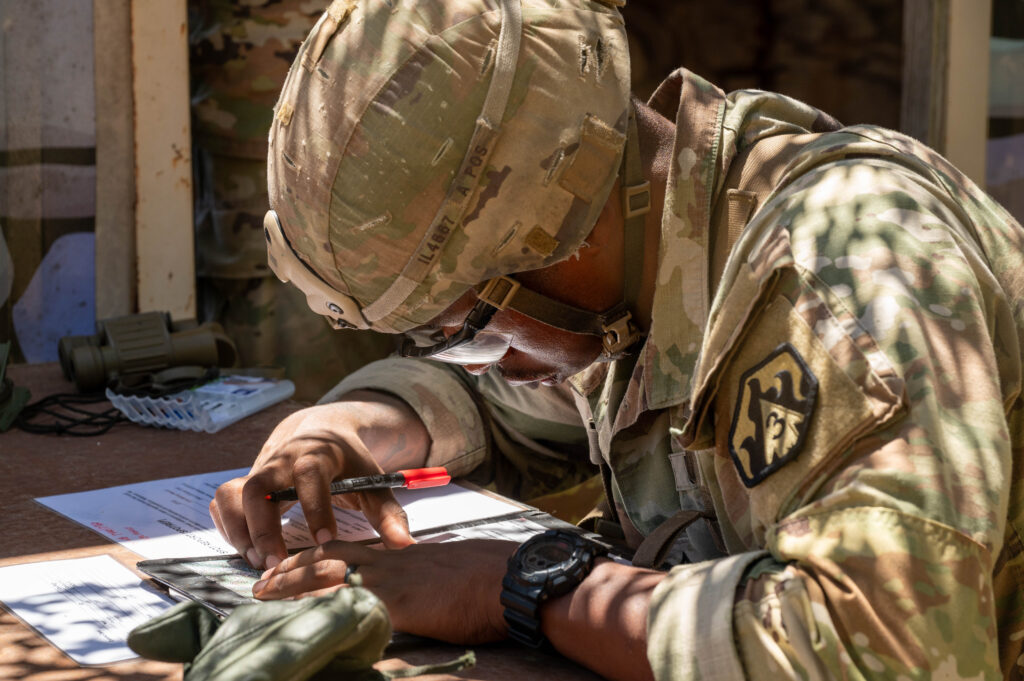Brian Hill
FORT LEONARD WOOD, Mo. (Nov. 5, 2020) — “Everyone in the battalion knows I’m the fitness guy — it’s a running joke that I need to open my own gym.”
A few months ago, Capt. Jeffrey Ferrel, executive officer for Company D, 1st Battalion, 48th Infantry Regiment, decided to use his personal interest in kinesiology — the study of the mechanics of body movements — to benefit the trainees in his company. With his help leading a supplemental physical training program, Delta Company improved the Army Combat Fitness Test scores for trainees at both ends of the fitness spectrum while minimizing injuries.
“I worked on both sides,” Ferrel said. “We had the supplemental program for trainees who were not yet to standard. But also, I wanted to reward the trainees who arrived here more prepared and wanted to do really well.”
Ferrel said the idea to include his unit’s highest PT performers came to him during the previous cycle of trainees assigned to his unit.
“That was the beta phase of it,” he said. “I had them practice a little extra. With this cycle I said, ‘Ok, we’re gonna do this because we want to see what we can do — where we can get these trainees and help them out with their careers, because if you show up to your next unit and you have a 600 on your ACFT, they’re gonna be stoked for you already.’ It’s something we can give back. That’s why I wanted to do it so badly.”
Ferrel said the hardest workers don’t always get the attention they need in Basic Combat Training.
“We seem to put a lot more effort and focus into the people who are struggling with the basics,” he said. “Those are the people who need the most training, and we put a lot of effort into those people. So, the people who come in and are prepared get put on the backburner. I wanted to reward those people who showed up and are ready to crush it by building on that.”
After getting permission from his company commander, Ferrel said he selected his groups of trainees during their first practice ACFT.
“I could see which trainees had a pretty good head start on everything,” he said. “I would bring them aside after the day’s training — after dinner — and we’d take all the equipment out and run through circuit training to help improve on the things I saw and then give them more one-on-one technique training.”
Out of 240 trainees, Ferrel said he selected 12 he felt showed potential to max their scores. That group eventually turned into 27.
“One thing that seemed to help the max ACFT crew is I would show them my technique,” he said. “I recommended they watch other people’s techniques as well though, because everyone’s bodies are different. You could maximize your technique by adding little pieces of someone else’s technique.”
For the 40-or-so trainees not yet to standard, Ferrel worked to figure out which events gave each trainee issues.
“It was usually just one they were having issues with,” he said. “I would say to them, ‘Let’s see your way of doing this.’ They would execute and then I would guide them through the steps: how to properly do a deadlift; how to maximize your ball throw. What type of muscles to help build up for the sprint-drag-carry.”
While many of the trainees in Ferrel’s supplemental PT program improved their scores, Pvt. Brandon Antunes ended up with a perfect 600.
“My goal was to get as close to maxing it out as I could,” he said. “The captain told me about the program he had. It really helped me out. It brought up my motivation level. He gave us a lot of extra time with the equipment.”
Antunes gave some advice on scoring a 600.
“You have to come prepared,” he said. “I love to weight lift, box, do cardio, but it was still a challenge. You just have to keep your head high — your goals high. Every day I told myself ‘I’m gonna get that 600, no matter what it takes.’”
Ferrel, who’s been in the Army five years, said the ACFT is “a better judge of actual physical fitness.”
“The (Army Physical Fitness Test) was very easy to administer because it required no large amounts of equipment or space — you just needed a place to run,” he said. “The ACFT is a much better test of actual, functional fitness.”
While he said his knowledge of kinesiology aided him in helping his trainees with their ACFT scores, Ferrel said there are still injury risks involved anytime someone works extra hard to improve. He’d like to see the Army continue to invest in professionals to assist with its Soldier fitness programs.
“Having people who are properly trained, who know what to look for, know what to judge and know what to do to assist is so important,” he said. “Not having the correct technique is a very easy way to get hurt. We’re trying to make sure we get these trainees through this healthy.”
For his part in ensuring safe fitness improvements in his unit, Ferrel was recently recognized by his brigade as part of their “Hero of the Week” program.
“The brigade continues to emphasize elements of holistic health and fitness to give our trainees the best chance to graduate and excel,” said Col. Adam Hilburgh, 3rd Chemical Brigade commander. “The focus by Capt. Ferrel and the rest of our cadre has ensured the brigade has the highest graduation rates in (U.S. Army Training and Doctrine Command), helping the Army maintain readiness.”
Lt. Col. Christopher Scott, 1-48th In. Bn. commander, added Ferrel “leaned on his strengths to ensure as many obstacles as possible were removed for these citizens attempting to become Soldiers.”
Ferrel said he loves to improve himself and wanted to instill that quality in his trainees.
“I’m wired to love physical fitness,” he said. “I wanted to give something back, make the trainees realize that by doing good, pushing harder, trying to excel — that’s what the Army wants. It rewards them in the short term, but it also builds their character, and that will make them better for the Army in the long term.”

-30-
About Fort Leonard Wood
Fort Leonard Wood is a thriving and prosperous installation that has evolved from a small basic training post more than 75 years ago to a premier Army Center of Excellence that trains more than 80,000 military and civilians each year.
Fort Leonard Wood is home to the U.S Army Maneuver Support Center of Excellence and three U.S. Army schools: the U.S. Army Engineer School; U.S. Army Chemical, Biological, Radiological and Nuclear School; and the U.S. Army Military Police School. In addition to training engineer, CBRN and military police specialties for the Army, Fort Leonard Wood also provides gender-integrated in-processing and Basic Combat Training for new Soldiers.
Fort Leonard Wood also hosts and trains with the largest Marine Corps Detachment and Air Force Squadron on any Army installation as well as a large Navy construction detachment.
More information about Fort Leonard Wood is at: https://home.army.mil/wood/index.php/about/mission

